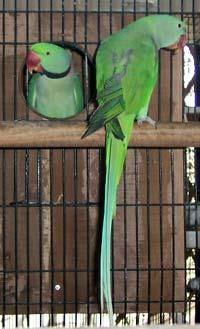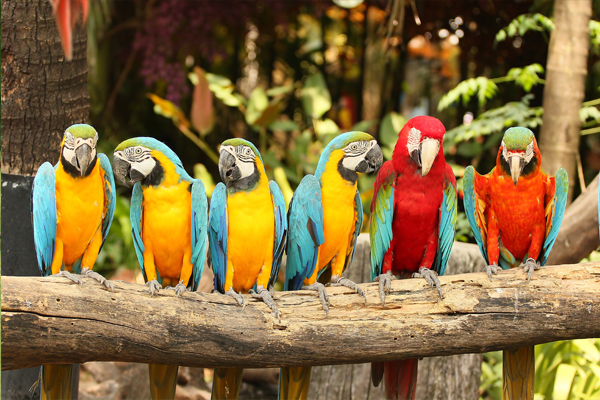

Royal Bird Farm
All Kinds of Local & Imported Parrots
AFRICAN GRAY PARROTS
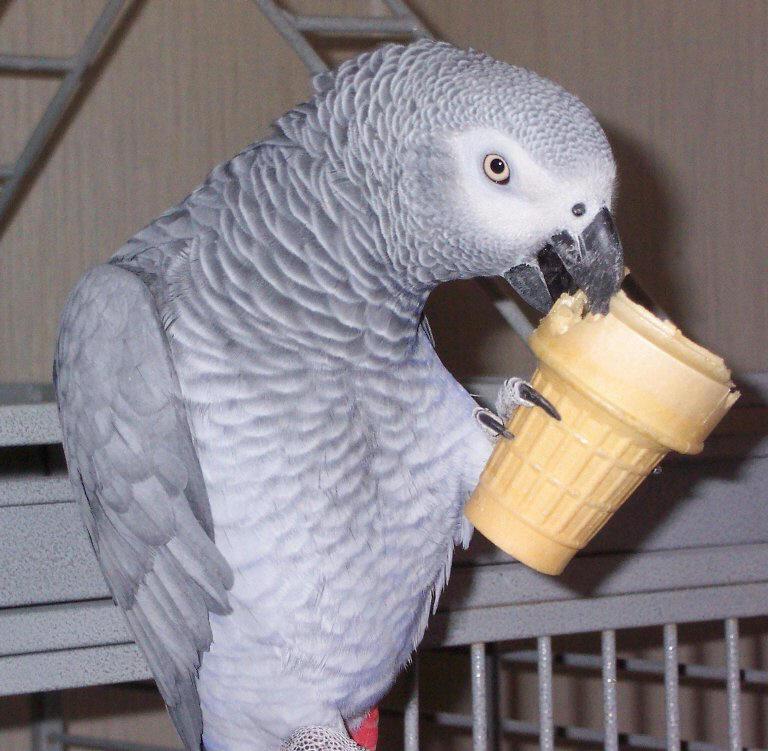
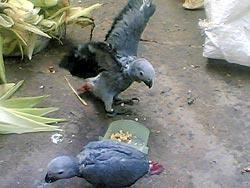
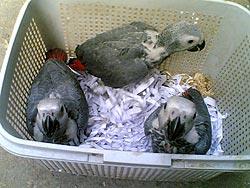
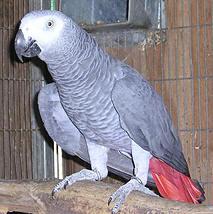
African Grey Congo (Psittacus erithacus) According to Forshaw, it is divided into three subspecies, P. e. erithacus, P. e. princeps, and P. e. timneh. Princeps occurs only on a couple islands in the Gulf of Guinea, and timneh occurs in southern Guinea, Sierra Leone, and western Ivory Coast.
The nominate form, P. e. erithacus, which is approximately thirteen inches in length, is referred to in aviculture variously as the Congo Gray, the Cameroon Gray, and the Ghana Gray. In fact, there is no taxonomic distinction between the three and all are considered one and the same bird. It is found throughout equatorial Africa from the Ivory Coast in West Africa south to Angola and through the Congo eastward to western Kenya and Tanzania. They are one of the few parrot species that is actually expanding its range.
The nominate form, P. e. erithacus, which is approximately thirteen inches in length, is referred to in aviculture variously as the Congo Gray, the Cameroon Gray, and the Ghana Gray. In fact, there is no taxonomic distinction between the three and all are considered one and the same bird. It is found throughout equatorial Africa from the Ivory Coast in West Africa south to Angola and through the Congo eastward to western Kenya and Tanzania. They are one of the few parrot species that is actually expanding its range.
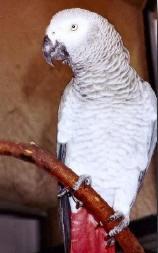
African Grays were imported in very large numbers from the late 1970's until 1992, when further importations were banned by the Wild Bird Conservation Act of 1992. Today, it is one of the commonest of the larger parrots in American aviculture and is bred in large numbers.
In the wild, African Grays feed on a variety of fruits, berries, seeds, and nuts which they take at treetop level. At Emerald Forest Bird Gardens, we offer them Mazuri parrot pellets, soak and cook bean mix and mixed vegetables.
Our African Grays breed in metal nest boxes lined with wood. They lay 3-5 eggs, which we allow them to incubate and then rear their young until approximately four weeks of age, when they are removed to our nursery for handrearing. They wean in approximately twelve weeks and are ready for their new homes.
In the wild, African Grays feed on a variety of fruits, berries, seeds, and nuts which they take at treetop level. At Emerald Forest Bird Gardens, we offer them Mazuri parrot pellets, soak and cook bean mix and mixed vegetables.
Our African Grays breed in metal nest boxes lined with wood. They lay 3-5 eggs, which we allow them to incubate and then rear their young until approximately four weeks of age, when they are removed to our nursery for handrearing. They wean in approximately twelve weeks and are ready for their new homes.

African Grays are well renowned for their exceptional talking abilities. Alex, the world famous African Gray, has been taught over 600 words and is able to associate them in creative ways suggesting a high level of intelligence and communication skills. Not only are these birds capable of huge vocabularies, but they also have the ability to sound exactly like what they are mimicking. This is due to the musculature design of their throats. (Contrary to popular belief parrots do not have "voice boxes." They talk similar to the way a human would whistle. Consequently, a parrot's ability to mimic sounds precisely depends on the number and development of muscles in the throat.) Grays are also quite the "thinkers." When learning to talk, they will typically listen to you very carefully before attempting to speak. They do not talk over you, as a flamboyant Amazon would.
Grays are also very sensitive, and don't cope well with sudden changes in their environment. Be careful to help them adjust to any new situation, such as moving to a new home, moving the cage to another part of the house, getting a new job, vacations, etc. Grays are very alert, friendly and playful parrots and love bright colored toys. They tend to attach themselves to their favorite human, but are not necessarily "one-person birds." All humans involved must make an active effort to interact with these birds. Grays' high level of intelligence, superior talking skills, and friendly demeanor make these birds wonderful pets.
